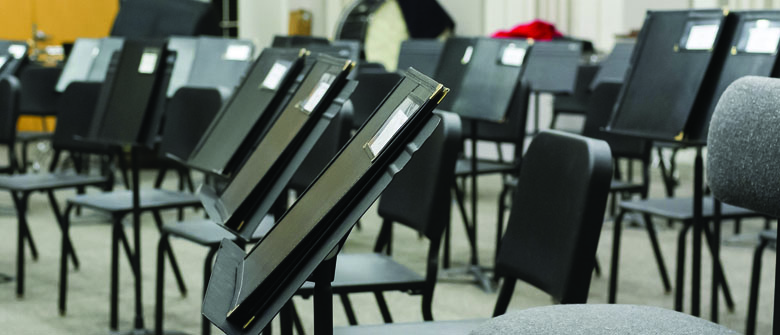
Of all the electives students could choose, many opt to participate in a music program. Some are competitive musicians, others enjoy the friendships, others find purpose in a common goal. Elementary school music classes often plant a seed of interest that can bloom into a passionate pursuit.
Music teachers nurture this enthusiasm while they also impart critical life skills - being on time and prepared - listening to and collaborating with their groups - feeling the value of their personal contributions to the whole. All these skills enrich students far beyond their days in the school's music department.
So, how can furnishings help music teachers keep students engaged and participating at their best levels? Here are 5 furnishing and layout ideas to create good vibrations in your music rooms.
Create clear sightlines to the director and to each other. Students must see the director so they can keep time and adjust dynamics to the group. When the whole group is arranged in a large curve, performers can see the director without craning their necks. A raised platform stage lets the director stand out more prominently. Adequate seat spacing lets performers more easily see others in their group, so they can learn by taking cues from one another.
Choose seating that promotes good posture and comfort. When students breathe more freely, they perform better. Seats with supportive backs keep performers in position to take fuller breaths. Padded seats and backs invite students to sustain healthy breathing postures without being tempted to slouch over time.
Arrange seating sections that promote free movement. Students will need to join and leave a rehearsal for a variety of reasons. Seated performers might need to reposition themselves so they can take a note, tune an instrument, or access music. When riser platforms are wide and seating sections are clearly spaced, performers can move with minimal disruption.
Plan efficient routes to and from storage areas. Cutting down on setup and cleanup time gives students more musical experiences to build their friendships around. Stationary storage can be strategically spaced to reduce traffic jams when moving to and from rehearsal areas. Rolling storage units preserve more rehearsal time by wheeling materials directly to specific groups.
Transition furnishings easily between rehearsal and performance spaces. Moving in and out of performance spaces is a service chore that builds camaraderie and pride in a job well done. More students can feel the weight of their contribution when risers easily unlatch, chairs readily stack, music stands nest and all items can roll to the next group.


